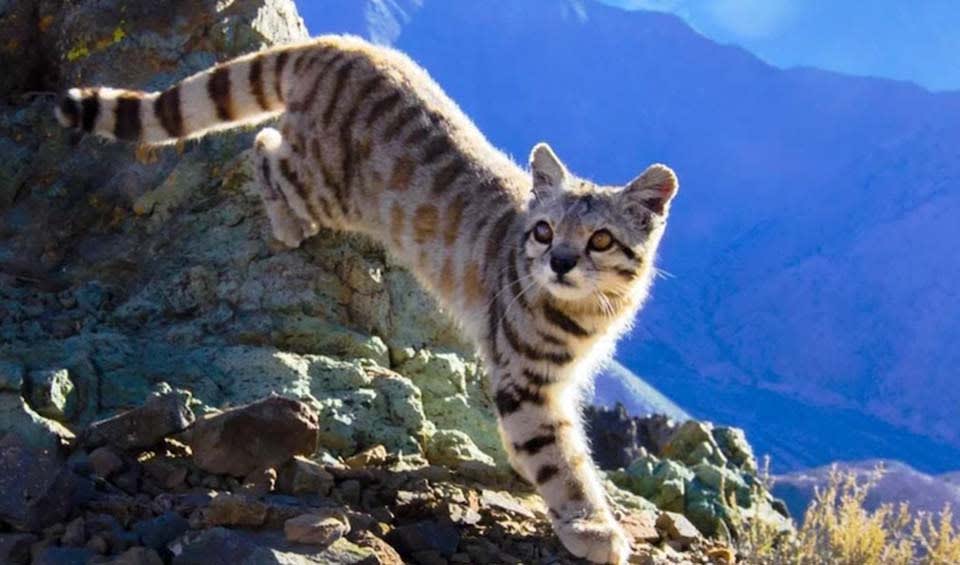This cat is one of the world’s least known and most endangered wild cats. With its ashy-gray coat complemented by a gray head, face, and ears, the Andean mountain cat embodies its mountainous habitat’s rugged and ethereal beauty. The thick fur and bushy, long tail provide insulation against the harsh Andean cold and give this cat a more substantial appearance than its actual size. Adding to its distinctive look, two dark brown lines stretch from the eyes across the cheeks, while the limbs and the tail are adorned with black rings, with the tail featuring 6 to 9 such markings.
Observations of the Andean mountain cat in the wild are exceedingly rare, leading to a veil of mystery surrounding this species. The reasons for its elusive nature and apparent rarity are not entirely understood, raising questions about whether it is a natural occurrence or a consequence of human actions. Despite the scarcity of sightings, it is clear that the Andean mountain cat population is declining, leading to its classification as an Endangered species. Among the chief concerns for the survival of the Andean mountain cat is the diminishing number of its primary prey, the mountain viscachas and mountain chinchillas. These rodents are essential to the cat’s diet, and their decline directly impacts the survival prospects of the Andean mountain cat.
The threats to the Andean mountain cat go beyond the loss of prey. Habitat degradation and fragmentation due to mining, agriculture, and other human activities further jeopardize its existence. Additionally, the Andean mountain cat holds cultural significance for local communities, sometimes leading to its persecution or capture of traditional practices. These human-induced factors compound the natural challenges faced by the Andean mountain cat, making its conservation a complex and urgent task.
Distribution
 Argentina
Argentina Bolivia
Bolivia Chile
Chile Peru
PeruAnything we've missed?
Help us improve this page by suggesting edits. Glory never dies!
Suggest an editGet to know me
Terrestrial / Aquatic
Altricial / Precocial
Polygamous / Monogamous
Dimorphic (size) / Monomorphic
Active: Diurnal / Nocturnal
Social behavior: Solitary / Pack / Herd
Diet: Carnivore / Herbivore / Omnivore / Piscivorous / Insectivore
Migratory: Yes / No
Domesticated: Yes / No
Dangerous: Yes / No




